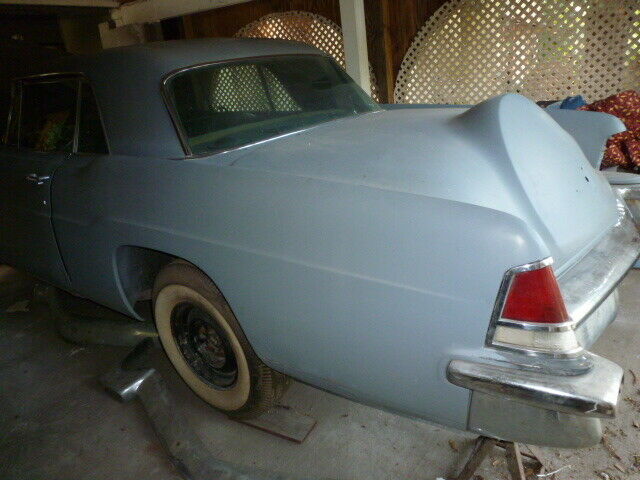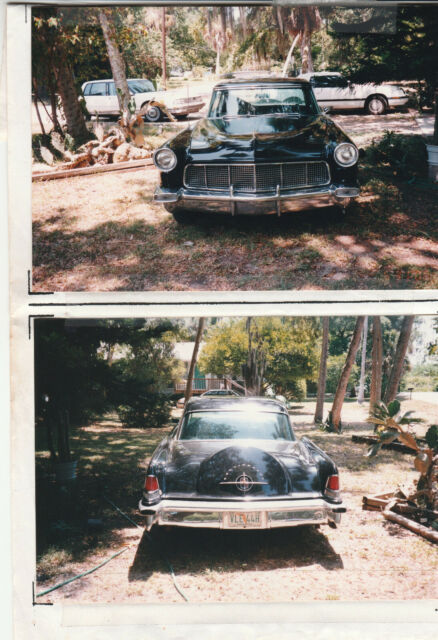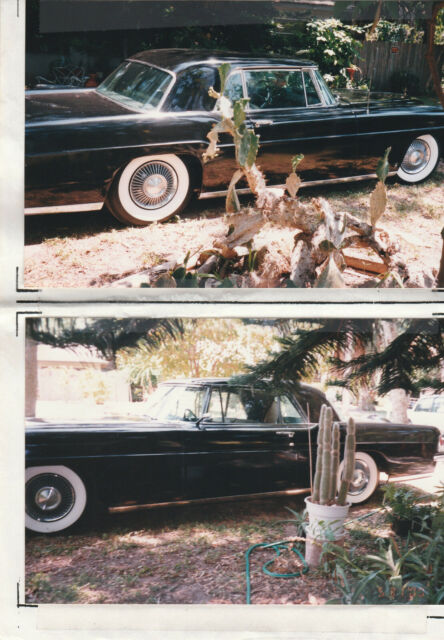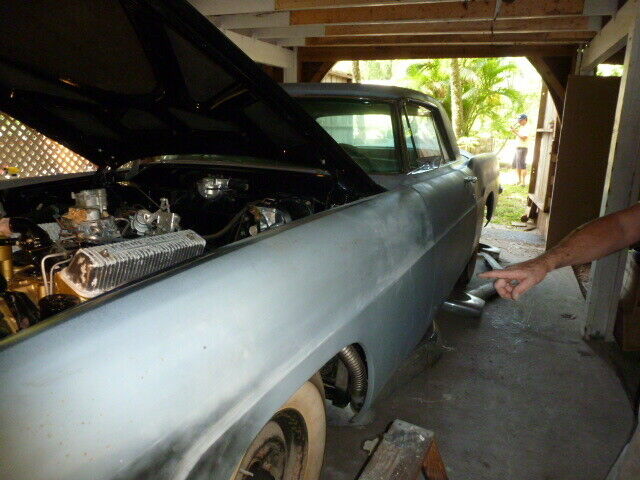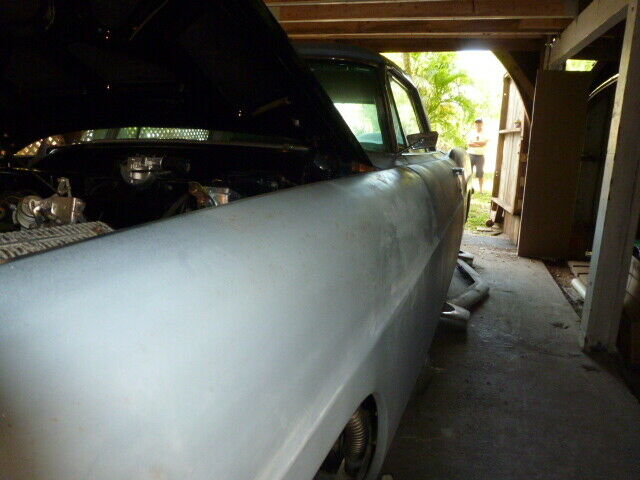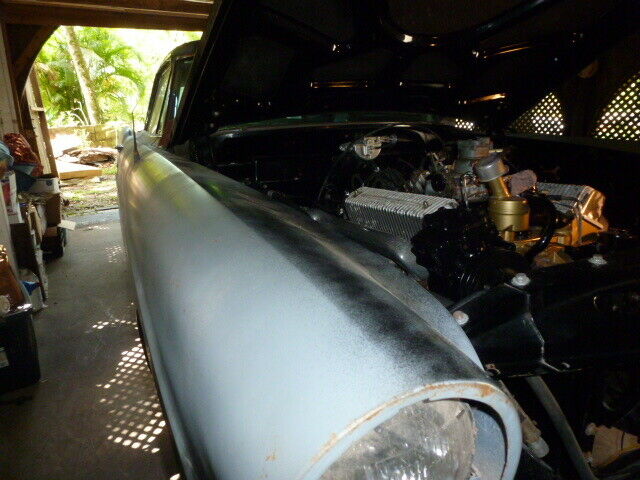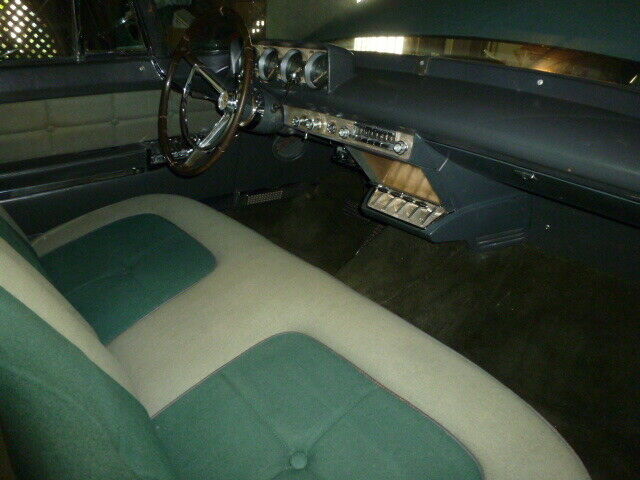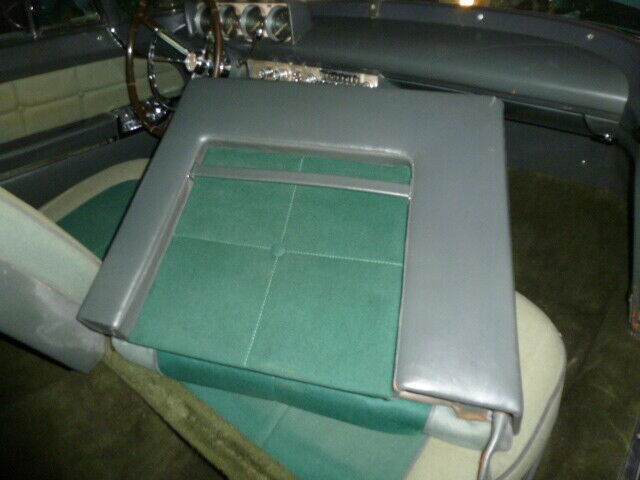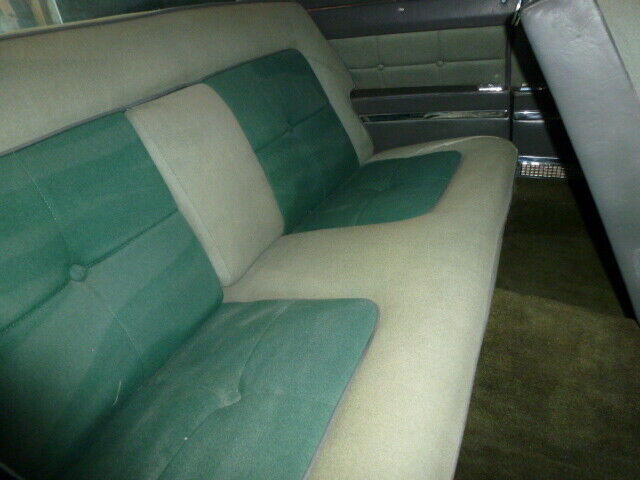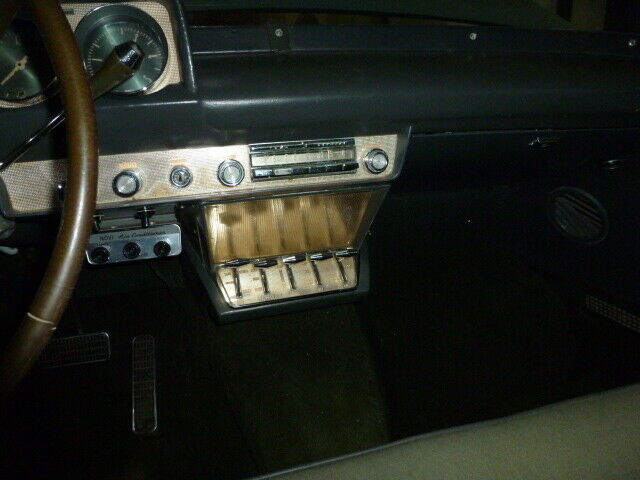1956 Lincoln Mark II 48,440 Miles Appraised for $60K 12/2018
- Make: Lincoln
- Model: Continental
- SubModel: Mark II
- Type: Coupe
- Trim: Mark II
- Year: 1956
- Mileage: 46833
- VIN: C5601525
- Color: Primer
- Engine size: V-8
- Number of cylinders: 8
- Power options: Air Conditioning
- Fuel: Regular Hardened Valve Seats
- Transmission: Automatic
- Drive type: RWD
- Interior color: Green
- Vehicle Title: Clear
- Location: Sarasota, Florida, United States
Description
1956 Lincoln Mark II 48,440 Miles
Appraised for $60K *located in pictures
Selling
I am selling this for my 76 Year old brother that has been fighting cancer. This has been his lifelong dream to own and restore this 56 Lincoln. Unfortunately due to his medical condition car has to be placed up for sale. He has completely rebuilt all the major mechanicals, chrome removed, body sanded to base metal and primed. Appraiser based his value on its present state and is 75% complete. To finish the bumpers need to be chrome, body painted, car is straight and never been hit. All the expensive repairs have been done including rebuilding the factory motor, transmission pumps air etc. using factory replacement parts so all numbers and components are factory. There is boxes of new parts too many to list almost like a model ready to be assembled. There are two minor rust spots found after stripping that need to be addressed, steering while needs to be repaired, window drivers side has a crack. One wheel cap has been completed and looks like a work of art. Pictures of Mark II in black is when it went in for restoration.
Rarity
Only produced 3005 in 1956/1957 comparable to Rolls Royce and Mercedes Gull Wing in sales price and twice the cost of the most expensive Caddy of its day.
Car is handmade and body sits over the chassis with rear exhaust exiting out of the bumpers.
Factory Air Conditioning for front and rear and all the power accessories of a modern car.
Wild Card
Original Owner unknown "THIS IS A WILD CARD" CELEBRITY OWNERS DEMAND A PREMIUM OF $100K OR MORE. Research has not been done as to original buyer or association with a major player in the 50's.
The Continental Mark II was featured in the 1956 film High Society, starring Frank Sinatra,Bing Crosby, Grace Kelly, and Louis Armstrong. After its sale to George Barris, the 1955 Lincoln Futura concept car (which used a Mark II chassis and powertrain) was converted to become the Batmobile for the namesake 1960s TV series. Nevertheless, there was no shortage of famous names on the Lincoln Continental Mark II owner list. Included were future New York governor Nelson Rockefeller, Milton Eisenhower (brother of the U.S. president), Barry Goldwater, and the Shah of Iran. From Hollywood: singers Frank Sinatra and Louis Prima, actors Walter Brennan and Stuard Granger, and movie moguls Cecil B. DeMille, Darryl F. Zanuck, Mike Todd, and Jack Warner. Additionally Tobacco baron R. J. Reynolds and Nevada hotelier Bill Harrah were also included, as was shipbuilding tycoon and erstwhile automaker Henry J. Kaiser.
Ownership
You have a chance to buy a piece of history that has been brought up to new mechanical condition. This is an investment that you can drive that keeps increasing in value when complete should be in the 100K range when finished.
Overview / history / Specs
The limited-production Mark II two-door coupe was built under the direction of 26-year-old William Clay Ford, who was Henry Ford II's younger brother. The younger Ford was put in charge of a new "Continental Division," which came up with the Mark II.
The Mark II was largely a successor to the glamorous Lincoln Continental of the 1940s, which led some to mistakenly call the 1956-57 Mark II a "Lincoln Continental." Ford Motor never called it a Lincoln.
The Mark II technically wasn't a Lincoln because it came from the Continental Division, which was separate from Ford Motor's Ford, Mercury and Lincoln divisions. The new division--initially called the "Special Product Operations" or "Special Projects Operation," was housed in sumptuous quarters and had a star-studded lineup of designers and engineers.
The Lincoln Continental began life as a 1939 custom body Lincoln for artistic Edsel Ford. Edsel was Ford Motor president and the son of company founder Henry Ford I., who wasn't artistic and pretty much ignored the Continental. Now an old man, he was still in love with the stark Ford Model T.
Edsel's car received so many compliments that Ford Motor made it a low-volume model. The 12-cylinder car was unofficially called the Mark I. One of its most distinguishing features was an outboard-mounted "continental" spare tire put in a housing behind the trunk
The Mark I was made from 1940 through 1942, when World War II interrupted production. It returned as nearly the same auto from 1946 through 1948 and set the stage for the Continental Mark II.
The 1940s Continentals had low sales, but drew lots of showroom traffic and prompted Lincoln dealers to ask for a successor. However, once-struggling Ford Motor lacked enough profits to begin developing such a car until 1953.
The 1956 Mark II cost $9,695, which would have let you buy two Lincoln Premiere luxury convertibles and have had a few hundrd dollar left. With air conditioning, the Mark II's price was $10,430.
The new car's base price made it the most expensive American car. It was a picture of refinement and taste, contrasting sharply with the heavily chromed, finned autos of the mid-1950s.
The new Continental was introduced in October 1955--but not at big American auto shows, such as those in New York and Chicago. Rather it was unveiled at the Paris Auto Show, and later that October at Ford headquarters in Dearborn, Mich.
The Mark II was greeted with acclaim and wonderment from the media and public on both sides of the Atlantic. Elvis Presley was among its celebrity buyers.
The Mark II had its own manufacturing facility, where nuts and bolts were hand-torqued to aircraft standards. More time was spent in the Mark II's metal-finishing and painting than typically was needed for the completed assembly of other high-quality autos. Then, each Mark II was shipped in its own fleece-lined cover to dealers.
Powering the 115-mph Mark II was a large 368-cubic-inch V-8 that generated 285 horsepower in 1956 and 300 in 1957. It was a 1956 Lincoln engine, but was disassembled, minutely inspected and reassembled after being individually hand-balanced. It was connected to a specially tested "Turbo-Drive" three-speed Lincoln automatic n transmission.
As it turned out, the Mark II was overshadowed by the 1957 Eldorado Brougham, a flashy, gimmicky, outlandishly priced $13,074 coupe.
It looked as if Cadillac built the Eldorado Brougham to outdo the Mark II. But, although everyone in Detroit knew Ford Motor was bringing out a very exclusive model, it took at least three to four years to develop a new car. Cadillac thus couldn't have introduced its Eldorado Brougham in time to compete with the 1956 Mark II
Also, it was common then for automakers to bring out limited-production cars that lured curious buyers to showrooms, where nearly all ended up getting regular models.
The Eldorado Brougham only lasted in its original form through 1958 because by then it had helped Cadillac make its point that it was still the top-dog luxury car producer, at least as far as total luxury car sales volume was concerned.
Despite its lofty price, Ford Motor lost about $1,000 on each Mark II, although some dealers initially got a $1,000 premium over its list price. GM lost a whopping $10,000 on each complicated Eldorado Brougham, which had such things as an air suspension.
Only 1,325 Mark IIs were sold in 1956 and just 444 units found buyers in 1957, when the car cost $9,996. Cadillac sold just 400 Eldorado Broughams in 1957 and merely 304 with an unchanged price in 1958.
No matter how much each car contributed to its builder's prestige, no Detroit auto could survive very long as such money losers.
The Mark II and Eldorado Brougham were radically different. The Mark II was understated and downright elegant, with little chrome and no fins, while the Eldorado Brougham was flashy and brash, although still well-done.
Few were surprised to see that the Continental Mark II was gorgeous because it revived the famous line of glamorous Lincoln Continentals of the 1940s.
Among new features of the low, sleek Mark II was a chassis that dipped low between the wheels and allowed a low center of gravity for better handling and comfortable, chair-high seats without the need for a high roofline.
The Mark II had the original, clean Continental's styling theme: long hood, short rear end--and a "continental" spare tire outline on the trunk lid. (The actual spare was inside the trunk.)
Even the Mark II's bumpers were elegant, and taillights were neatly inset. In fact, the Mark II styling was years ahead of its time. The Eldorado Brougham, with its heavy use of chrome, fins and even a brushed stainless-steel roof, was much more in tune with the 1950s. Its styling today screams "Fifties!"
The Mark II interior was simple and elegant, inspired by aircraft and locomotive designs. It contained top grain leathers, expensive fabrics and thick, luxurious carpeting. It was loaded with power accessories and other equipment. There were even dual heaters. The only option was air conditioning, which had ducting built into the headliner on the inside roof.
The Mark II look trim and fast, but was no fireball despite its strong V-8 because it was large and weighed a hefty 4,800 pounds. It wasn't slow, but acceleration was average. This was no car for kids. However, it could cruise silently and effortlessly all day at speeds well above the legal limit.
The Mark II vanished much too quickly. Its demise broke the heart of Bill Ford, who had planned a line of Continentals, including convertible and four-door models. He was said to have little interest in a Ford Motor auto for a long time after the Mark II was dropped.
The Mark II was replaced by the Continental Mark III. It was a huge, Lincoln-based car that came as a sedan, coupe and convertible. It had elongated fenders, large chrome appliques, huge tail fins and canted quad headlights. It lacked the Mark II's custom-style assembly and cost about $6,000.
Continental sales improved with the Mark III. But for 1959, "Continental" vanished as a separate marque, again becoming a Lincoln model. The Continental Division was absorbed by Lincoln-Mercury.
When the Mark II was discontinued, its luxurious executive offices were taken over by another new Ford Motor division, which Ford was sure would produce a winning new car. The auto was called the Edsel.
1956-1957 Lincoln Continental Mark II Specifications
The Lincoln Continental Mark II will go down as one of the most elegant flops in automobile history. Despite classic styling and massive promotion, it was simply too expensive for the average -- or even above-average -- consumer.
| Manufacturer | Continental Division, Ford Motor Company |
| Dates of Manufacture | June 1955-May 1957 |
| Body Type | two-door hardtop |
| As-New Price | $9,695 (1956), $9,966 (1957) |
| Wheelbase (in.) | 126.0 |
| Overall Length (in.) | 218.5 |
| Overall Width (in.) | 77.5 |
| Overall Height (in.) | 56.0 |
| Shipping Weight (lbs) | 4,797 (1956), 4,825 (1957) |
| Drivetrain Specifications | |
| Engine Type | ohv V-8 |
| Bore x Stroke (in.) | 4.00 x 3.66 |
| Displacement (cu. in.) | 368.0 |
| Compression Ratio (:1) | 9.0 (1956), 10.0 (1957) |
| Carburetion | 4-barrel downdraft (Holley 1956, Carter 1957) |
| Exhaust System | dual |
| Horsepower @ rpm | 285 @ 4,600 (1956), 300 @ 4,600 (1957) |
| Torque @ rpm (lbs/ft) | 402 @ 3,000 (1956), 415 @ 3,000 (1957) |
| Fuel Capacity (gal) | 25 |
| Crankcase Capacity (qts) | 5 |
| Radiator Capacity (qts) | 25.5 |
| Transmission Type | Lincoln Turbo-Drive 2-speed torque-converter automatic |
| Final Drive ratio (:1) | 3.07 |
| Chassis Specifications |
| Chassis Specifications | ||
| Front Suspension | independent; upper and lower control arms with ball joints, coil springs, temperature-sensitive shock absorbers | |
| Rear Suspension | live axles, semi-elliptic leaf springs, temperature-sensitive shock absorbers | |
| Steering | power-assisted recirculating ball | |
| Turns Lock-to-Lock | 3.9 | |
| Turn Diameter (curb-to-curb, ft) | 45.3 | |
| Brakes | power-assisted 12.0-inch cast-iron drums front and rear | |
| Tires (in.) | 8.20 x 15 (tubeless 4-ply whitewall) | |
| Standard Equipment | ||
| Power steering; power brakes; power front seat; power door windows; power vent windows; AM radio; heater; choice of cloth or leather upholstery; full interior and trunk carpeting; tachometer; electric clock; full engine instrumentation; tubeless whitewall tires; full wheel covers; dual exhausts. | ||
| Performance (a) | ||
| 0-60 Acceleration (mph) | 12-14 | |
| Top Speed (mph) | 110-115 | |
| Fuel Consumption (mpg) | 8-11 | |
| (a): Ratings based on contemporary road reports |
Inspection if wanted by buyer to take place no later than 4-Days after sale. Deposit of 25% received no later then 24 hours after sale. Car to be picked up and payed in full by cash or cashier check no later than 7-Days after sale.
Upon Sale buyer be paid in cash or cashiers check only.
 Lincoln Continental Mark VI 1980 Runs Great with 2018 Android USB 7" Backup cam
Lincoln Continental Mark VI 1980 Runs Great with 2018 Android USB 7" Backup cam
Mileage: 367,456
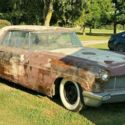 1957 Continental Mark II - 57 Lincoln - 56 1956 Mk II Mark 2 Restomod???
1957 Continental Mark II - 57 Lincoln - 56 1956 Mk II Mark 2 Restomod???
Mileage: 95140
 1956-Lincoln-Continental-Mark-II 1956-Lincoln-Continental-Mark-II 1956-Lincol
1956-Lincoln-Continental-Mark-II 1956-Lincoln-Continental-Mark-II 1956-Lincol
Mileage: 76,100
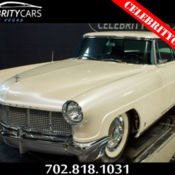 1956 Continental Mark II las vegas elvis Low Miles (Lincoln / Ford)
1956 Continental Mark II las vegas elvis Low Miles (Lincoln / Ford)
Mileage: 2,308
 1956 Lincoln Continental Mark II 84631 Miles Presidential Black
1956 Lincoln Continental Mark II 84631 Miles Presidential Black
Mileage: 84,631
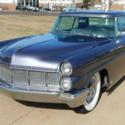 1956 Lincoln Continental Mark II 65,023 Miles Westeria 368ci Air conditioning
1956 Lincoln Continental Mark II 65,023 Miles Westeria 368ci Air conditioning
Mileage: 65023
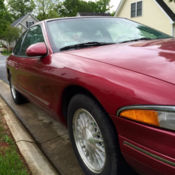 1993 LINCOLN MARK VIII 46K ORIG MILES SHARP EXCELLENT CONDITION LINCOLN MARK VI
1993 LINCOLN MARK VIII 46K ORIG MILES SHARP EXCELLENT CONDITION LINCOLN MARK VI
Mileage: 46,050
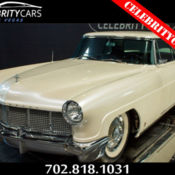 1956 Lincoln Mark II continental las vegas elvis Low Miles Coupe Unspecified Gas
1956 Lincoln Mark II continental las vegas elvis Low Miles Coupe Unspecified Gas
Mileage: 2,308
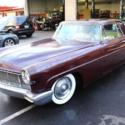 1956 Lincoln Continental Mark II 56500 Miles Burgundy Coupe 368 8 Cyl Automatic
1956 Lincoln Continental Mark II 56500 Miles Burgundy Coupe 368 8 Cyl Automatic
Mileage: 56500
 1956 Lincoln Mark 2
1956 Lincoln Mark 2
Mileage: 46,609
